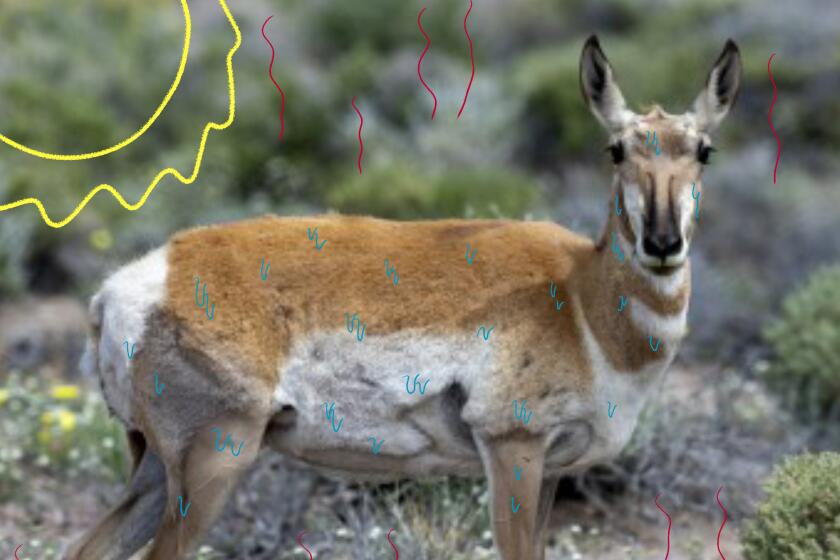‘Alone’ finale reveals last survivor standing in the Arctic winter
- Share via
Feeling alone during the pandemic? Consider how much more miserable you would feel in a self-made shelter in the Arctic. In winter. Eating, say, a sick porcupine or wild mushrooms you stole from a squirrel.
That and more happens in Season 7 of “Alone,” the History Channel adventure show that dropped 10 people at different places in a remote Arctic landscape to see who would last longest. Tonight is the big reveal: Who, if anyone, toughed out 100 days to win $1 million?
The show has been chugging along for six seasons. It wasn’t until coronavirus hit that it seemed to become more relatable (and binge-worthy) among viewers who suddenly feared for their own survival — on couches and in their homes.
Get The Wild newsletter.
The essential weekly guide to enjoying the outdoors in Southern California. Insider tips on the best of our beaches, trails, parks, deserts, forests and mountains.
You may occasionally receive promotional content from the Los Angeles Times.
Let’s get this out of the way right now: These people really are alone. Participants are given cameras and shoot thousands of hours of video that are then edited into individual episodes. “This is 100% as real as it gets,” said Mark D’Ambrosio, a former U.S. Marine who teaches back-country sniper and survival skills.
In the series, it’s fascinating to hear the voiced inner thoughts and day-to-day chores of these characters, men and women, who are master outdoors people. Each person is vetted and put through a boot camp before they are selected. They get to choose 10 items to bring into the wilderness that will help them build their shelter, kill game, keep warm, and, yes, survive.
Still, their skills only take them so far. No one votes anyone off an island; they “tap out” (call for emergency rescue from a medical/safety team) when they can’t take it anymore.
D’Ambrosio found the stress of being alone in harsh conditions to be exacerbated by the need to film 40 hours a week. “You’re trying to get the bunny shot on camera,” he said. “Meanwhile, you’re missing catching the rabbits.”
D’Ambrosio, 33, said he ate about 5 pounds of fish a day as well as rabbits, squirrels and mice. But he became weak and had trouble breathing. He signaled for help on Day 34. “I was done, and I knew I was done,” he said later in a phone interview.
Turns out D’Ambrosio had contracted the parasitic disease trichinosis, which had spread to his organs and caused congestive heart failure. He spent weeks in a hospital and at home getting his strength back. Would he do it again? Absolutely.
Callie Russell, 31, is one of four who lasted until the most recent episode. Before the trip, she was concerned about the vulnerability of being on camera all the time. “I was really calm being in the wilderness, to me it’s my happy place,” she said in a phone interview. “It’s where I most feel at home. Calm and peace deepened the longer I was out there.”
The mystery of why a certain species is returning to the desert, and what hikers should do when a lightning storm hits.
During her time in the extreme setting, she found natural clay and fired her own pots for containers. Viewers watch the thrill of her ability to snare and skin her first rabbits, and later kill a porcupine, whose organs turned out to be tainted. For all contestants, finding food becomes an all-consuming task.
And that’s what creates a lot of the tension — and pain. In the latest episode, contestant Amos Rodriguez realized he was losing too much body fat and desperately needed nourishment. “I don’t have any more fish and all my reserves are gone,” he said on the show. Defeated and weak, we watch as he loses the one nibble he had during an entire day of fishing. Time to tap out.
The finale airs at 8 p.m. on History. And yes, there will be a Season 8.
More to Read
Sign up for The Wild
We’ll help you find the best places to hike, bike and run, as well as the perfect silent spots for meditation and yoga.
You may occasionally receive promotional content from the Los Angeles Times.








